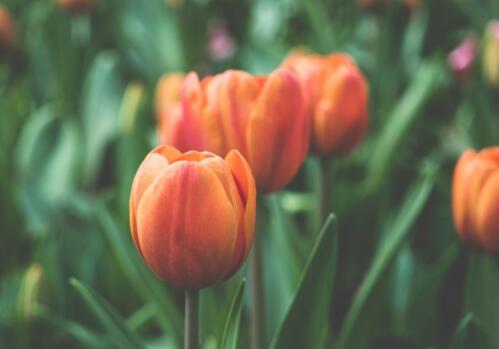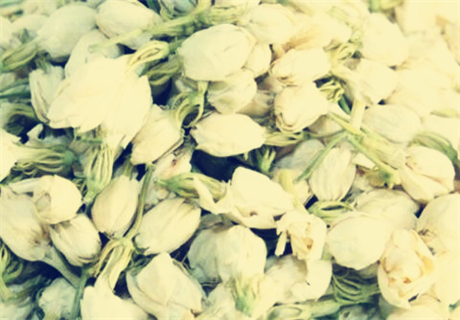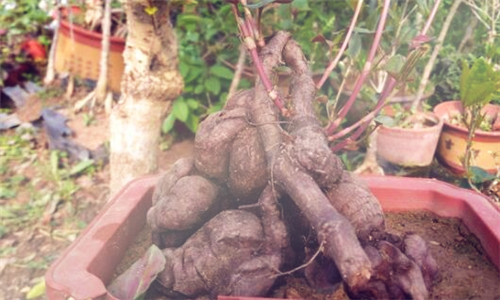What are the common varieties of lilies? Is it poisonous to put it indoors? How many times a year does it bloom? How do you breed?
Lily flowers, also known as Qiangqi, leek, mountain Dan, inverted immortal, lily garlic, its stem is graceful and graceful, is a valuable cut flower rookie. What are the common varieties of lilies? Is it poisonous to put it indoors? How many times a year does it bloom? How do you breed? According to the information of Liliaceae, lilies only blossom once a year under natural conditions, but through human intervention, lilies can blossom twice a year, with a flowering period from July to October. Friends who like lilies should not miss the flowering period.

What are the common varieties of lilies?
1. Common potted lilies have Asian potted series:
Super Kangbas, 45 cm tall, golden orange flowers, 4-6 buds per shoot
Local love, plant height 40 cm, flowers dark yellow, the number of buds per branch is 8: 10.
Partner, plant height 40 cm, crimson flowers, 6-8 buds per shoot
Dreamy, plant height 45 cm, yellow flowers, 4-6 buds per shoot
Chameleon, 45 cm high, golden yellow flowers, 6-8 buds per branch
Xinbo, plant height 40 cm, flowers pure white, the number of buds per branch 7: 9
Blackbird, 30 cm tall, crimson flowers, 4-6 buds per shoot
Horizon, 35 cm high, orange flowers, 6-8 buds per shoot.
two。 Common varieties:
Curly lily
Curly lily is also called curly lily, sky cover lily, inverted lotus, tiger skin lily, yellow lily, pearl flower. Because it has purple-black markings on its petals, much like the pattern on the back of a tiger, it is also called "tiger skin lily". The lily plant is relatively tall, which can be called the crown of lily. The bulbs of lilies are enlarged, edible or medicinal, with orange or brick yellow flowers, long petals, curling outward, and purple-black spots on the petals.
Shandan lily
Shandan lily, also known as Shandan, Shandan flower, line lily, coral lily, fine leaf lily, because its leaves are thin and numerous, Corolla like coral. When flowering, the flowers droop and the petals roll outward, the color is bright red and the luster is beautiful. The leaves are scattered, mostly concentrated in the middle of the stem, showing a strip, with papillary protuberances on the edge of the leaves. The perianth is strongly curled, bright red, without spots, and the filaments are red. The flowering period of beautiful lily is July and August, and the fruit ripening period is September.
Shandan lily
Beautiful lily, also known as deer lily, gorgeous red lily. The leaves of beautiful lilies are wide and sparse, opposite, so beautiful lilies are also called big-leaf lilies. Its petals roll outward, the color is white or light red, there are rose patterns and spots on the petals, very similar to the pattern on the deer, so it is also called deer lily.
Easter lily
Musk lily, also known as Easter lily, iron cannon lily, belongs to the representative variety of flower lily, the flowers are pure white and open horizontally.
Are lilies poisonous indoors?
Lilies belong to the family Amaryllidaceae, which release carbon dioxide at night, affect the indoor air, and produce toxic substances when they bloom, making people dizzy and headache, so it is best not to put them in the bedroom.
How do lilies reproduce?
At present, the reproduction of lilies mainly depends on asexual reproduction. In terms of production, there are mainly three kinds of scale propagation, bulb propagation and bulb propagation.
1. Scale propagation
When the leaves begin to turn yellow in autumn, strong and disease-free plants are selected to dig bulbs. Peel off the poor quality and dried scales on the surface of the bulb, peel off the inner bulb, soak the hypertrophic scale in 50% carbendazim or carbendazim solution for 30 minutes, take it out, dry it with the base down, and cut it on the seedbed filled with fertilizer soil. The insertion part is the scale of 2 stroke 3, the spacing is 3-6 cm, insert the back cover grass to protect the shade and moisturize.
two。 Bulblet propagation
During harvest, the bulbs on the healthy plants were collected and sterilized according to the method of scale propagation. Then sow seeds according to the plant spacing of 15 cm and the row spacing of 16 cm. After one year of cultivation, some of them can reach the standard of bulb (single weight 10 grams), and then they can be planted. For the younger ones, continue to cultivate for 2 years before planting.
3. Bulblet propagation
The bulbs are harvested after maturity in summer and stored in a ventilated place with wet sand after harvest. From September to October of that year, from September to October of that year, according to the row spacing of 15 cm, open a 4 cm shallow trench, sow 1 bulb every 6 cm in the ditch, cover the fine soil about 3 cm thick after sowing, cover and water the grass, uncover the grass and fertilize when the seedlings emerge the next year. After the aboveground parts withered in autumn, the bulbs rose, and then sowed in the seedbed according to the row spacing of 20 × 10 cm. When harvested in the autumn of the third year, some of the bulbs can reach the standard of planting bulbs, and the smaller ones will be planted for another year.
Time: 2019-03-15 Click:
- Prev

How to make jasmine tea? How much is good jasmine tea? the procedure of scenting scented tea per jin
Jasmine is not only ornamental, but also widely used to make scented tea, essential oils and desserts. It is a good choice for flowers. It has the effect of dispelling cold evil and assistant depression. It is understood that the output value of planting jasmine tea in Leshan, Sichuan has reached 20,000 yuan. So how much is the price of jasmine now? What's the market like?
- Next

How much is the market price of Polygonum multiflorum? How much money can you make by planting one mu? What are the market prospects? How
Polygonum multiflorum, also known as Polygonum polygonum, wisteria, night vine, etc., is a common traditional Chinese medicine in Yunnan, Guizhou, Sichuan, East China and other places. It is widely used because of its anti-aging, brain-strengthening and intelligence-promoting effects.
Related
- Fuxing push coffee new agricultural production and marketing class: lack of small-scale processing plants
- Jujube rice field leisure farm deep ploughing Yilan for five years to create a space for organic food and play
- Nongyu Farm-A trial of organic papaya for brave women with advanced technology
- Four points for attention in the prevention and control of diseases and insect pests of edible fungi
- How to add nutrient solution to Edible Fungi
- Is there any good way to control edible fungus mites?
- Open Inoculation Technology of Edible Fungi
- Is there any clever way to use fertilizer for edible fungus in winter?
- What agents are used to kill the pathogens of edible fungi in the mushroom shed?
- Rapid drying of Edible Fungi

